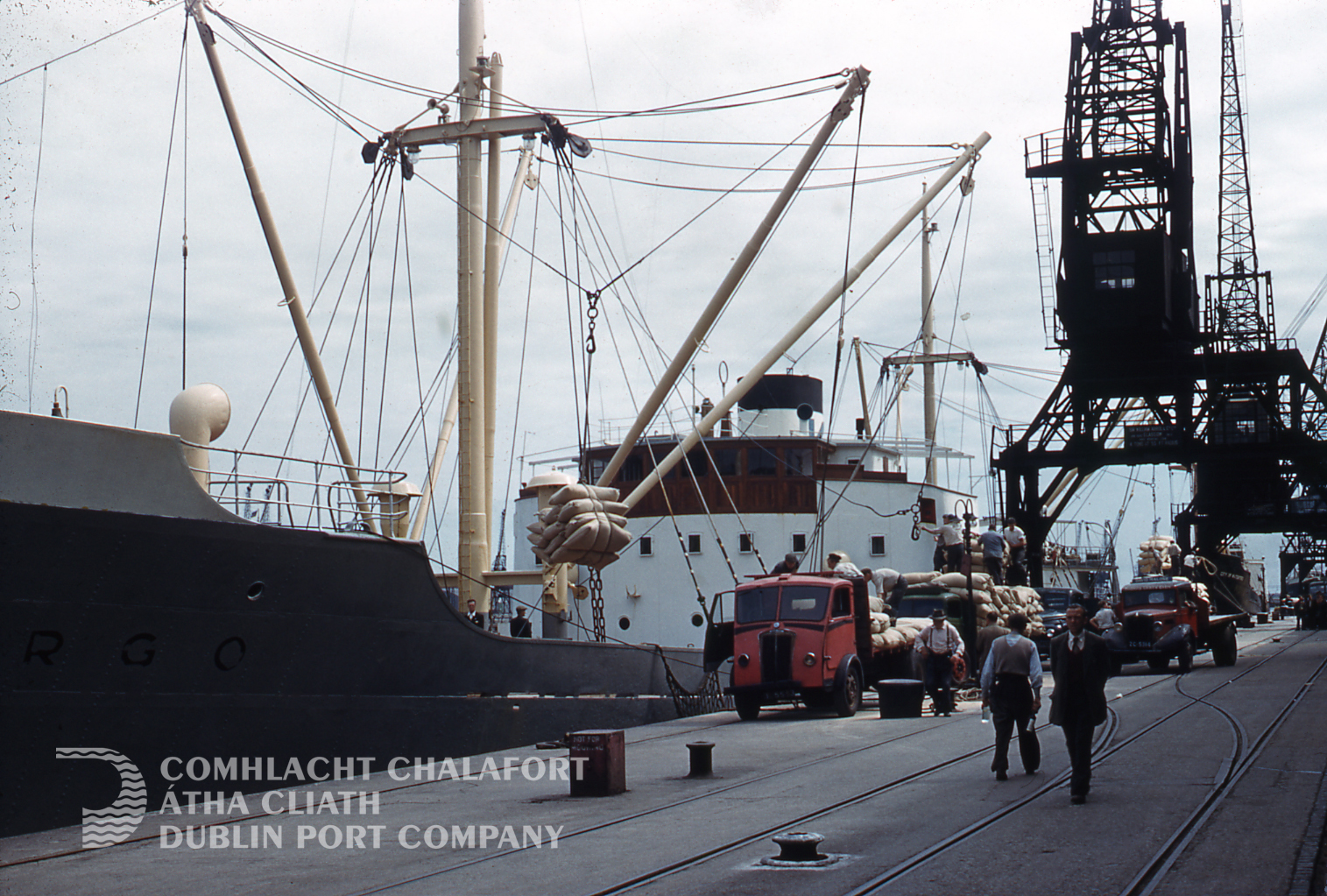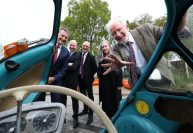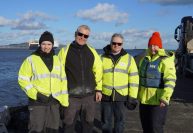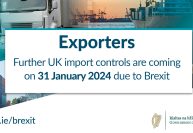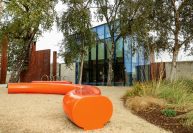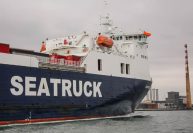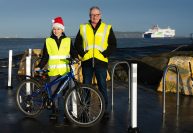DUBLIN PORT OPENS PUBLIC CONSULTATION ON 3FM PROJECT

Poolbeg Peninsula project vital to deliver capacity required for Port by 2040
Community Element includes new Port Park, Maritime Village and significant cycling/pedestrian routes; New bridge over Liffey to serve heavy vehicles
Dublin Port Company has today commenced formal public consultation on the 3FM Project, the third and final Masterplan project needed to complete the development of Dublin Port and bring it to its ultimate and final capacity by 2040.
The 3FM project is focused on Dublin Port lands on the Poolbeg Peninsula, on the south side of the bay and will deliver 20% of the capacity required by 2040. The Poolbeg peninsula already houses the greatest cluster of major utility operations in Ireland, with the largest wastewater works, the biggest waste-to-energy plant as well as power stations and part of the National Oil Reserve.
The 3FM project follows on from the first two Masterplan phases focused on the Port lands north of the bay – Alexandra Basin Redevelopment which is nearing completion and MP2 which has recently commenced construction. All three are pillars of Dublin Port Company’s highly strategic approach to maximising Port capacity which has been underway since 2010.
This period of public consultation will be open until Friday, April 28th. It follows initial conversations in 2021 with key stakeholders and also a first round of public engagement in November 2021. Feedback from this led to a number of important changes to the initial plans. Since then, Dublin Port Company has been engaged in the preparation of detailed designs and environmental analysis ahead of lodging a planning application in summer 2023. This latest consultation phase will include a number of Public Information Days in Poolbeg, Ringsend and Clontarf where the Dublin Port team can discuss the plans with members of the local communities.
Details of the 3FM Project are available to view online at www.dublinport3fm.ie
Highlights of the 3FM Project
The project has seven main elements:
1. A new 2.2km road called the Southern Port Access Road (SPAR). This will link the north and south port areas, and will include a 190m bridge, with a 45m lifting section to the east of the Tom Clarke Bridge. This will take heavy goods traffic off local roads by providing a dedicated route for port traffic as well as other heavy goods traffic on the Poolbeg Peninsula. The SPAR will have a substantial ‘active travel’ provision comprising cycle and pedestrian ways, as well as capacity for public transport to Poolbeg. (See attached image and map).
2. The development of the largest container terminal in Ireland in front of the ESB’s Poolbeg Power Station. This terminal will have 650 metres of new deeper water berths at the east of the port and comprise a 9.1 hectare area for exports (Area N) at the waterside and a 5.9 hectare yard (Area O) on the southern side of the Poolbeg peninsula for imports. Altogether this terminal will have the capacity to handle 353,000 units (600,000 TEU) annually – more than twice the number of containers handled in all other ports in the country last year.
3.The relocation of container traffic to the east of the Port will allow the construction of a major new Ro-Ro terminal just north of the Sean Moore Roundabout. This 12.6 hectare site will take trucks with containers (Roll On / Roll Off) for the increasing volumes of traffic coming directly from Europe post-Brexit. This terminal will add significantly to national strategic Ro-Ro capacity.
4.A new 325 metre ship turning circle in front of Pigeon House Harbour. This has been the subject of extensive simulation modelling and will allow safe and efficient turning of 240m long ferries – the largest class of vessels.
5.A Utility Area of 1 hectare to accommodate services provided by others including the district heating system to be provided from the Covanta waste to energy plant and other services for the proposed residential developments in Poolbeg.
6.A new ‘Maritime Village’ – a modern sailing and rowing campus which will provide enhanced facilities for a range of users including sailing and rowing clubs, sea scouts, the Nautical Trust and local boat owners. The Maritime Village has been developed in consultation with local groups and will replace the current much smaller facilities as well as improving opportunities to view Port activities from the new waterside public plaza area. (See attached image).
7.Extensive Community Facilities including a 2.8 hectare Port Park and adjacent landscaped area, with 5G floodlit playing pitches and dog run. It will also see the provision of 5.5 km of active cycle and pedestrian paths throughout the Poolbeg peninsula which when linked to the planned active travel routes on the north side of the river will provide over 16km of cycle & pedestrian paths. (See attached image showing cycle / pedestrian way).
A Vital Project for Ireland
Dublin Port is the facilitator of economic growth in Ireland and the Masterplan is based on maximising Dublin Port’s capacity up to 2040. Dublin Port Company has previously highlighted that new port facilities will be needed elsewhere on the east coast to cater for increased port demand after that point. Without 3FM, Dublin Port would reach its capacity much earlier – perhaps by 2030, prompting the risk of a national port capacity shortage.
3FM is seen as a project of national strategic importance and it is mandated through Project Ireland 2040, National Ports Policy and as part of the National Development Plan 2021-2030.
It is expected that a planning application for 3FM will be made to An Bord Pleanála in summer 2023 and based on a start date in 2026, the target completion date for the overall project is 2039.
Port-City Integration
The 3FM project will deliver on the capacity objectives of Masterplan 2040 but it will also address an ongoing key objective of Dublin Port Company – the reintegration of the Port with Dublin City. Citizens will benefit from the 2.8 hectare Port Park and adjacent landscaped areas and improved access to the waterfront and Great South Wall, all linked by more than 5km of new and improved pedestrian and cycle routes. These will tie in with over 10km of greenways and active travel routes currently being built in the north port area, including the Liffey-Tolka Project.
Commenting on the 3FM project, Dublin Port Chief Executive Barry O’Connell said:
“We are very pleased to be progressing the 3FM project – which literally means “third and final” project of Masterplan 2040.
“Growth in volumes has been driven by a vibrant economy which has resulted in an increase in household consumption but also a hugely successful export sector. Exports now account for 40% of all movements through the port with at least some of the 60% of imports also comprising of raw materials later to be exported. With the value of exports up to 3.5 times that of imports it is clear to see how important the export sector is to the economy and indeed, how successful the State’s FDI strategy has been. Dublin Port, whilst having no direct influence on demand, has a critical role to play in facilitating this economic growth which is why the 3FM project is of critical importance as we look to a future of continued economic prosperity.
Dublin Port will need to maximise capacity within its existing footprint for an annual throughput of 3.1 million trailers and containers by 2040. The 3FM project will deliver 20% of this capacity through the largest Lo-Lo terminal in Ireland – 353,000 containers per annum and a new Ro-Ro freight terminal – 252,000 freight trailers per annum.
“Dublin Port Company takes a generational approach to development at the Port – large infrastructure projects take up to 20 years from inception to completion. We know what we have to deliver on to enable Ireland’s growth up to 2040 and beyond and our expert team has been actively engaged in delivering the Masterplan for more than 10 years now. The ABR project is coming close to completion and we are pleased to have recently commenced the MP2 project on our northern lands.
“The Masterplan would be unable to progress without the support of all of our stakeholders and the early conversations in 2021 on 3FM, particularly with the statutory agencies, the major utilities already in Poolbeg and our local communities were extremely important in shaping our plans to this stage. We look forward to even greater engagement in the weeks ahead.
“Enhanced amenities for local citizens are central to our planning and the wonderful amenities at Port Park, the Maritime Village and all along the additional 5km of active travel routes will open up the waterside in new ways to Dubliners and help deepen understanding of the huge contribution the everyday work of the Port brings to enable all of our work and home lives. Port-City integration is a major objective of Dublin Port Company and 3FM will link in seamlessly with our other important projects in strengthening that vital connection between the Port and the people it serves”.
Help us with the Archive
You can help us to preserve Dublin Port’s rich archival heritage by
donating items or seek advice from us on items in your safekeeping.
Get in touch by completing the contact form below.
We’d love to hear from you!
